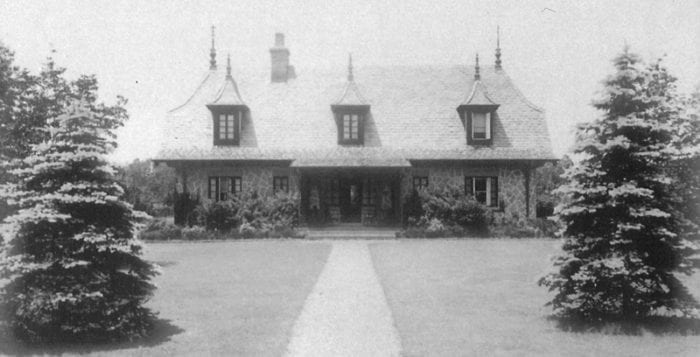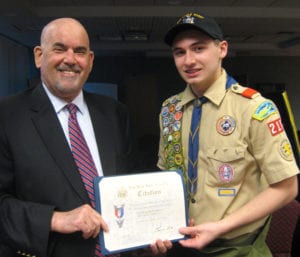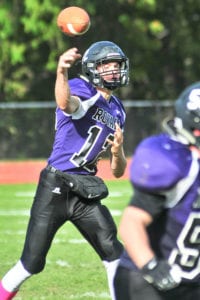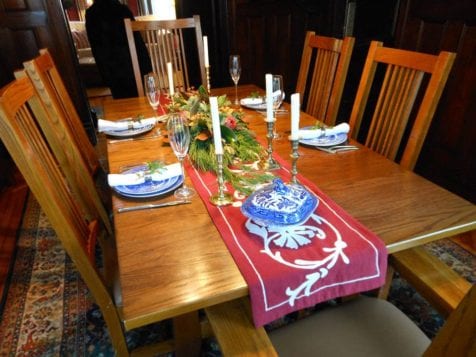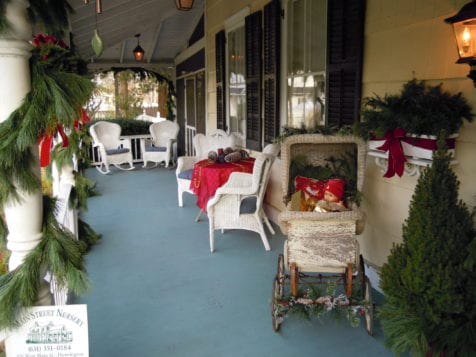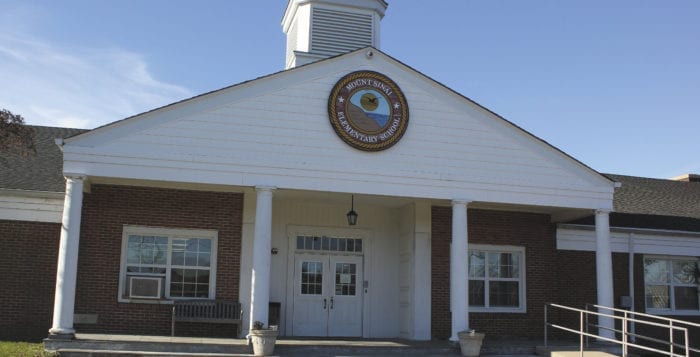By Kyrnan Harvey
Alas, the allium are pretty well sold out, daffodils too I am afraid to report, from my mail-order sources like John Scheepers and Brent & Becky’s. However, if you still have the urge to invest some effort to procure some deer-proof color for spring, try the garden centers and the box stores. Possibly some choice varieties are still available, but be sure that they are not shriveled dry from a couple months of indoor heat.
With the leaves finally down, I make sure they are blown off the lawns. Lawn grasses thrive in cooler weather, so you don’t want to deprive them of a few weeks of prosperity with smothering damp leaf cover. Moreover, there is a modest pleasure derived from seeing your lawn all uniformly green again after gazing for weeks over the leafy litter, a refreshing counterpoint, more especially now, to the barren limbs of trees, the naked stems of deciduous shrubs and to the straw-colored ornamental grasses.
If you employ a lawn service, leaf blowers will typically trod over, through and onto eyes of Baptisia and peonies and Amsonia hubrichtii (commonly called blue star), blasting every scrap of humus and last May’s mulch out of the beds, exposing the naturalized and nestled-in forget-me-nots to killing exposure. In naturalistic and ecologically correct gardens it is preferable to leave fallen leaves in planted beds and where there is no lawn or paving. I even blow them into the beds, within reason, as nature’s natural mulch.
My diktat to clients, to pass onto their gardeners, is “Don’t blow the leaves in (else they will blow all of them in)” and “Don’t blow them out — of my plantings.” True, some leaves will be blown out by those arctic gusts into the lawns, and come spring cleanup you will have some work to do, removing leaves by hand where they have accumulated, but it beats the alternative of clodhoppers crushing the dormant crowns of coneflowers and columbines. I get many self-seeded perennials; but if you let your gardener blow out your beds, chances are they will blow out the baby with the bathwater.
Recently, my 10-year-old RedMax blower, a lightweight, handheld, gas-powered tool, developed carburetor issues. Rather than spend the money to have it fixed (or not), I bought a new Stihl, available at Ar-Jon Outdoor Power Equipment on Comsewogue Road in East Setauket. Very light, good power, $140.
While landscapers use the much heavier and noisier backpack blower, the Stihl is perfect for the homeowner, as indispensable to the lady gardener as to the lazy teen. If you have under a half-dozen oak trees, this is all you need. Gardeners should prefer control over leaf removal. If you have an incipient woodland garden, for example, blow all the leaves into it; they will prevent weed seeds from germinating and in two years will be earthworm-loving humus. Or blow them under the arching stems of the forsythia and into the hydrangeas.
Leaf mold is a most excellent compost. You could pile all your leaves in a hidden, out-of-the-way corner and start a large compost pile with which to annually amend your organic kitchen garden.
I have had, in a protected corner of a client’s garden, a Euphorbia characias. A common sight in sophisticated English gardens, it is an evergreen spurge native to the Mediterranean and thus not very hardy here. A year and a half ago I scattered its seeds in my home garden. Last spring they started germinating, albeit in an exposed location. The deer haven’t touched them because of the sticky sap. And this past month I have blown leaves into them, providing much needed insulation.
Kyrnan Harvey is a horticulturist and garden designer residing in East Setauket. For more information, visit www.boskygarden.com.


